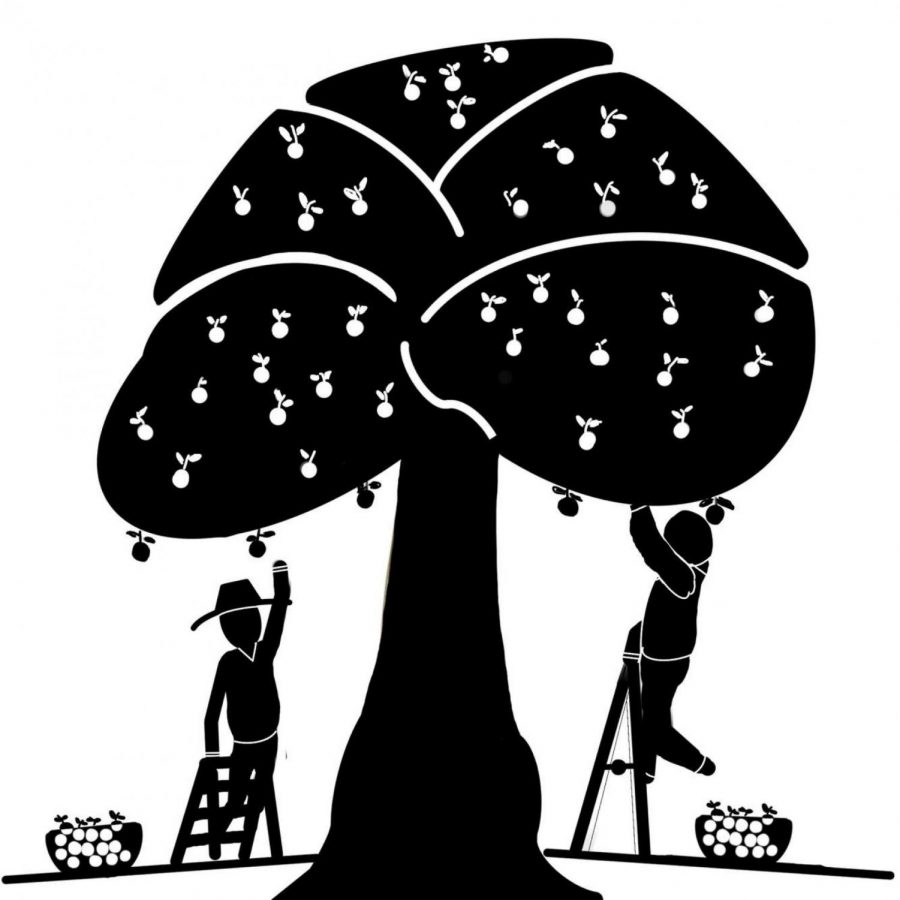EDITORIAL: The Difference Between Equity and Equality
Similar to the scenario presented by George Washington University, two children reach for an apple tree, but one is granted a taller ladder in order to be able to reach the tree.
November 18, 2021
While we strive to achieve equality and promote equal opportunity for all groups and backgrounds, it is time we recognize and reconsider whether certain situations need to first focus on promoting equity in order to attain this equality.
Consider a scenario presented by George Washington University: two children go apple picking, but in order to reach the apple tree one of them needs a taller ladder. When child A gets the ladder they need in order to reach the same tree as child B, they are now able to achieve an equal outcome of reaching the apple.
In order to achieve equality, it first requires uplifting minority communities who are not given the same resources or opportunities to the same extent as the majority. This is where equity becomes involved, as it incorporates fairness into a situation, allocating the right resources in order to pave the way for minority groups to have equal access to an equal outcome.
As the general public starts to move past the passionate “Black Lives Matter” movement many allies fought for when the issue was publicized, popularized, and “current,” the determination and active support for equity from these allies has lessened.
Take, for example, the case of Kyle Rittenhouse, who shot and killed two men and wounded a third in protest against police brutality, in the midst of the Black Lives Matter movement.
The idea and horrific irony that an armed white teen was not only permitted by police into a city where activists were rallying against a white officer’s shooting of a Black man but also allowed to walk past the same police line directly after murdering two people and injuring one has rightfully angered many.
If Kyle Rittenhouse were Black, the possibility that his criminal case would have been handled very differently is an example of how there exists a systemic racism within the legal system that prevents everyone from truly getting due process, an essential part of achieving equity.
That being so, names and cases like Kyle Rittenhouse should not have to serve as the sudden awakening for allies to actively rejoin the movement, these names should serve as reminders of what it is we fight for: not only equality under the law, but a world where equity has allowed us to reach the point to where equality is an attainable outcome.
The counterargument posed by many argue that marginalized groups are granted these equal opportunities because of the success garnered by influential names in the BIPOC (Black, Indigenous, People of Color) community, this is a common fallacy expressed by those who have the privilege to say so: tokenistic fallacy.
Tokenistic fallacy takes one important minority figure to justify all of the inequality and social injustice within society. Successful BIPOC can coexist with the economic deprivation of millions of black families. Although many have paved significant inroads to positions of power, it does not mean we can ignore the BIPOC who continue to face oppression.
These marginalized communities have to work that much harder in order to achieve the same level of success. To equitably allocate resources to these groups would not be putting them at an unfair advantage, instead it would be alleviating some of the disadvantages they face and allowing these groups the same advantages that many privileged groups don’t realize they have to begin with.

